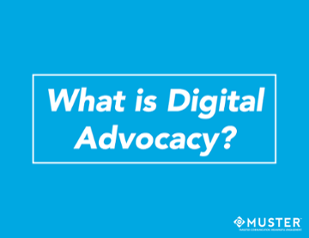
As an association leader or executive director, your responsibilities are widespread and integral in driving your mission forward. If your association is looking to streamline internal processes and become a more effective, future-oriented organization, look to technology. The marketplace for association software and other technology tools is seemingly endless.
501(c)6 organizations operate within a wide fiscal spectrum. Large, national associations may enjoy multimillion dollar budgets, while small, state, and local level associations (which are just as an important for American citizens) may be bound by a tight budget. Regardless of budget, staff size, or issue area, utilizing savvy, cost-effective software within your association will boost your organization’s productivity and assist your staff maintain focus and effectiveness, helping to propel your association’s vision into reality.
Productivity Challenge #1
Efficient communications with your association colleagues
Technology Tool: Slack
How many times have you sent your coworker(s) a one-sentence email? Email is undeniably the leading avenue for digital communication between your association and external parties...but for within your association? Slack is an online communications tool that simplifies dialogue between coworkers. Slack’s instant messaging application helps your staff work effeciently together and saves time. Rather than cluttering your colleague's inbox with unneccessary one sentence emails, you can easily send them a Slack message, and they will be instantly notified.
Productivity Challenge #2
Managing political advocacy for stronger impact
Technology Tool: Muster
Nonprofit 501(c)3 organizations and 501(c)6 associations aim to influence mission-critical legislation supporting their policy agenda. However, without digital advocacy tools, it is difficult to mobilize and direct members and supporters to take meaningful political action. As an association executive director highly involved in external affairs, you have most likely utilized complicated and confusing digital tools through your government advocacy experience. In contrast to other clunky advocacy software solutions, Muster leverages the newest software technology to provide clients with an intuitive and intelligent solution.
Additionally, Muster’s tiered, size-based pricing model offers affordable advocacy software to all associations, regardless of budget, size, or scope.


Productivity Challenge #3
Maintaing a Twitter Presence
Technology Tool: TweetDeck
Depending on the size and scope of your association, Twitter may be one of the key communications channels you utilize to share messaging with your members and other interested parties. TweetDeck simplifies the multichannel process of the business-side of Twitter by allowing you to monitor hashtags, those you follow online, and tweet directly from the platform. Additionally, TweetDeck allows for multiple users to access the platform. You, as an association executive director, can collaborate with your communications and marketing leaders, through TweetDeck. Want to learn more about how associations can best harness social media? Read this blog post.
Productivity Challenge #4
Easily designing visual content for your social media accounts and website in-house
Technology Tool: Canva
If your association is lucky to employ a talented marketing coordinator, graphic design may be a skill-set that your colleague can apply to marketing and/or sales material. However, perhaps purchasing the full Adobe suite of design software isn't an option due to budget constraints, or perhaps you have been outsourcing your visual needs to a freelance graphic designer. Consider using the online program, Canva. With both free and paid tiers, Canva is a fanatastic alternative for other pricey design software.
Productivity Challenge #5
Building a Thriving Association Culture
Technology Tool: StrengthsFinder
Recently, Bob Ramsey, the Executive Director of the Virginia College of Emergency Physicians wrote an insightful blog post detailing the importance of the self-assessment tool, StrengthsFinder. Keeping your association colleagues motivated, inspired, and productive in their respective roles is based on skillset and personality traits. As Ramsey said, "focusing on your strengths forces you to do more of what you like and are good at doing rather than struggling with improving your weaknesses". Productivity is key to building a thriving association culture with happy and motivated staff members.
